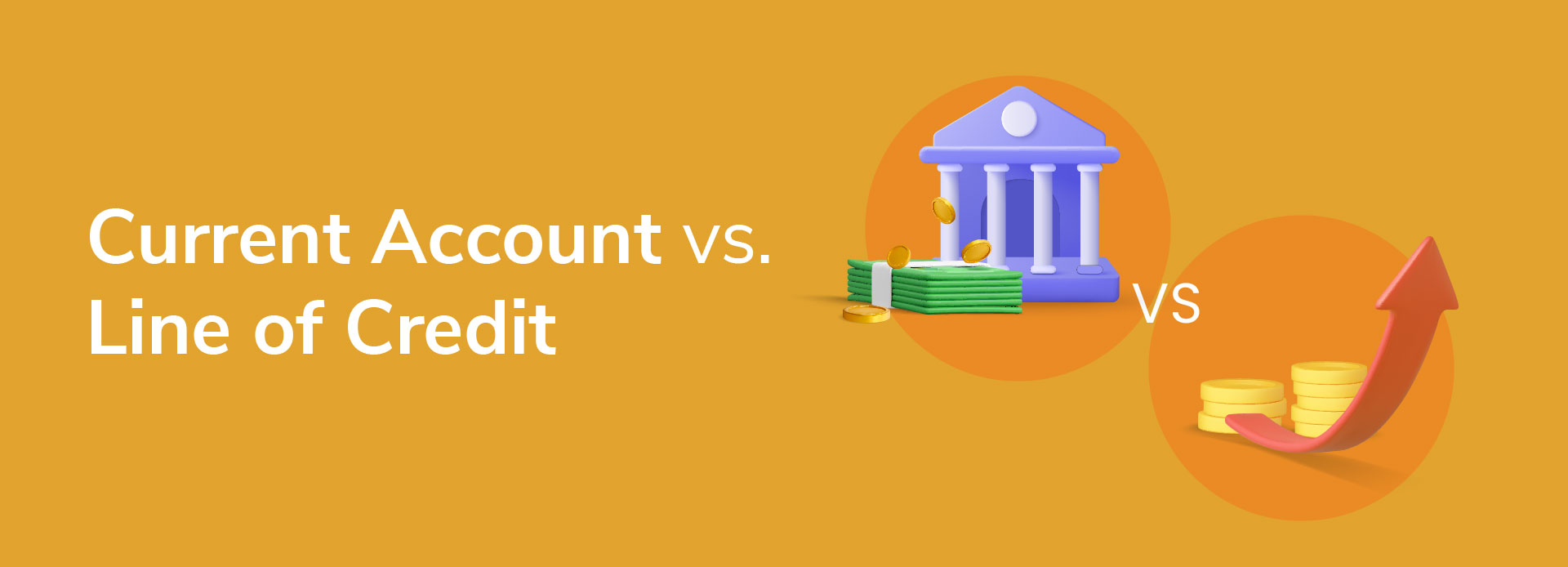
Difference Between Current Account and Line of Credit
06 June 2024 | By INDIE
Effective cash flow management ensures a balance between income and expenses/investments. Maintaining healthy cash flow is vital for meeting day-to-day operational needs and paying suppliers, employees, and bills promptly. This is precisely where current accounts and lines of credit play a pivotal role.
While current accounts and lines of credit may appear similar at first glance, they serve distinct purposes and operate differently. In this blog, we will dive deeper into the differences between a current account and a credit line . Let’s start with the basics first.
Basics Definitions of Current Account and Line of Credit
A current account is a bank account type designed for businesses and individuals to manage their day-to-day financial transactions. It caters to incoming and outgoing funds, allowing users to deposit money, make payments, and withdraw cash as needed. Current accounts typically offer features such as cheque books, debit cards, and online banking services, providing convenience and flexibility in conducting financial activities related to the business.
On the other hand, a line of credit or cash credit are financial arrangements that provide businesses with fund access up to a predetermined credit limit. It operates as a form of short-term borrowing, allowing users to withdraw funds as needed and repay them over time. Unlike traditional loans with fixed amounts and repayment schedules, a line of credit offers flexibility in borrowing, enabling users to access funds as required and only pay interest on the amount borrowed.
Recommended Read: Decoding the Interest Rates on the Line of Credit
Differences Between Current Account and Line of Credit
Parameter |
Current Account |
Line of Credit/cash credit |
Purpose |
Used for day-to-day financial transactions, such as receiving payments, making payments, and maintaining liquidity |
Designed as a form of short-term borrowing, providing access to funds up to a predetermined limit |
Nature of Funds |
Holds the user's funds, allowing for easy access and management of liquid assets |
Provides a source of external financing, allowing users to borrow funds up to the extended limit |
Interest Accrual |
Typically does not accrue interest on the deposited funds |
Incurs interest on the amount borrowed, with interest charges applied to the outstanding balance |
Transaction Facilities |
Offers features such as cheque books, debit cards, and online banking services |
Does not typically offer transactional facilities, as they are primarily used for borrowing |
Repayment Structure |
Does not involve a repayment structure, as it holds the user's funds |
Requires repayment of the borrowed amount, typically with interest, over a specified period |
Current Account Vs. Credit Line: Which One to Choose?
If you find yourself weighing the options between a current account and a line of credit or pondering over “line of credit vs current account”, there’s a catch. You need not choose any one between the two but can choose both for your business needs. Here, it's essential to understand that these two financial tools serve different purposes and can complement each other rather than being mutually exclusive.
A current account can provide a central hub for your day-to-day financial transactions, offering convenience in managing liquid assets. On the other hand, a credit line can serve as a source of short-term borrowing, providing access to additional funds beyond your current financial resources.
You can use both these financial tools in conjunction to optimize financial management. This combination can empower your business to maintain financial stability while seizing growth opportunities and managing unforeseen expenses effectively.
While the choice between a current account and a credit line may seem daunting, you must recognize that these financial tools complement each other. The key lies in strategic financial management, where both a current account and a credit line play crucial roles in ensuring the financial stability and growth of your business. Hopefully, you won’t have to have the “current account vs line of credit” dilemma anymore.
Disclaimer: The information provided in this article is generic in nature and for informational purposes only. It is not a substitute for specific advice in your own circumstances. Hence, you are advised to consult your financial advisor before making any financial decision. IndusInd Bank Limited (IBL) does not influence the views of the author in any way. IBL and the author shall not be responsible for any direct/indirect loss or liability incurred by the reader for taking any financial decisions based on the contents and information.





